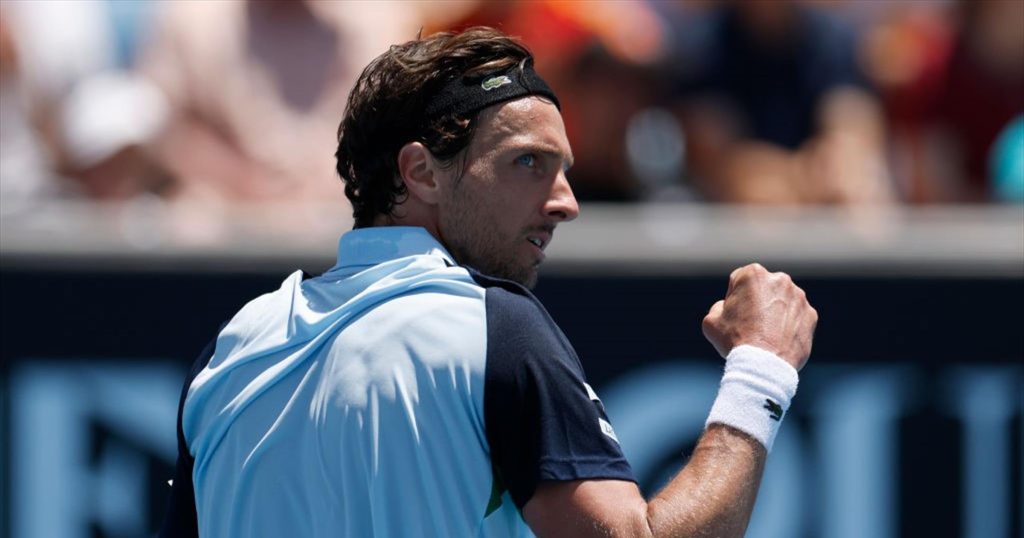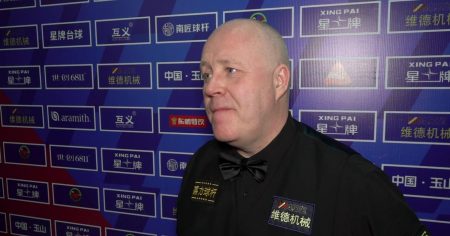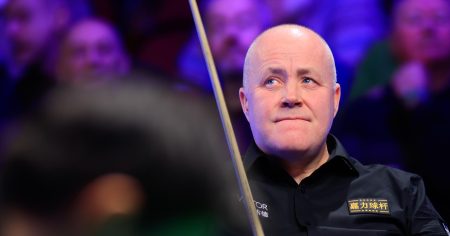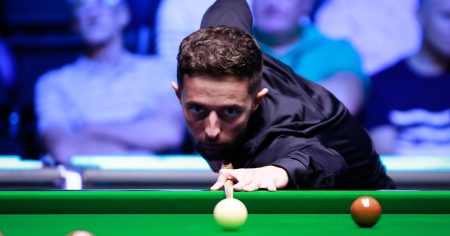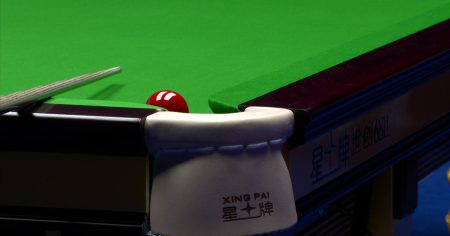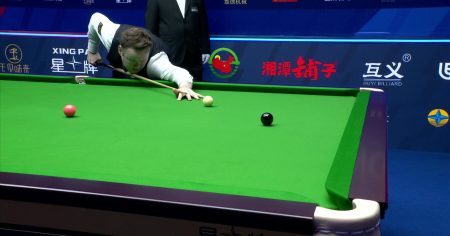The first-round clash between Arthur Rinderknech and Frances Tiafoe at the Australian Open provided a thrilling spectacle of power and precision, culminating in a truly memorable game dominated by Rinderknech’s thunderous serves. This particular game, a microcosm of the broader match’s intensity, showcased the raw power and strategic serving that characterize the modern game. Rinderknech, facing immense pressure against the talented Tiafoe, elevated his game to a new level, unleashing a barrage of aces that left Tiafoe virtually helpless and the crowd in awe. This wasn’t merely a display of brute force; it was a masterclass in placement and variation, demonstrating how a strategically deployed serve can be an unstoppable weapon in tennis.
The tension in the air was palpable as the game unfolded. Every point was fiercely contested, each player refusing to yield an inch. Tiafoe, known for his athleticism and explosive shots, found himself constantly on the defensive against Rinderknech’s relentless serving onslaught. The booming sound of the ball impacting Rinderknech’s racket echoed through the stadium, followed by the almost instantaneous thud as the ball landed squarely inside the service box, often before Tiafoe could even react. The sheer speed of the serves was breathtaking, leaving Tiafoe struggling to even make contact, let alone mount a meaningful return. It was a demonstration of how, at the highest levels of the sport, a dominant serve can become an insurmountable hurdle.
Each ace, delivered with power and precision, brought Rinderknech closer to securing the game. The crowd, sensing the impending spectacle, roared with each successful serve. Tiafoe, despite his best efforts, could only watch in frustration as Rinderknech systematically dismantled his defenses. The game transcended a simple point tally; it became a testament to the power of the serve, the importance of mental fortitude, and the dramatic swings of momentum that define professional tennis. It was a vivid illustration of how a player, facing a formidable opponent, can find an extra gear and elevate their performance to achieve something truly remarkable.
The sequence of aces wasn’t just a display of physical prowess; it was a strategic masterpiece. Rinderknech didn’t just rely on brute force; he varied the placement and spin of his serves, keeping Tiafoe guessing and off-balance. He targeted the lines with pinpoint accuracy, exploiting Tiafoe’s positioning and forcing him into awkward, defensive positions. Some serves were flat and thunderous, aimed directly at the T, while others were sliced wide, curving away from Tiafoe’s reach. This clever manipulation of the serve highlighted the importance of strategy and tactical thinking, even in moments of pure power. It underscored the fact that tennis, at its highest levels, is as much a mental game as it is a physical one.
The impact of this incredible game extended far beyond its immediate result. It injected a surge of energy into Rinderknech’s performance, bolstering his confidence and putting him firmly in control of the match’s narrative. For Tiafoe, it served as a stark reminder of the challenges he faced against a player wielding such a potent weapon. The crowd, witnessing this remarkable display of serving prowess, were treated to a moment they wouldn’t soon forget. It was a moment that encapsulates the excitement and unpredictability of Grand Slam tennis, a reminder that even in the early rounds, magic can happen.
This single game, dominated by Rinderknech’s masterful serving, served as a microcosm of the larger match and a testament to the power and strategic importance of the serve in modern tennis. It showcased the incredible athleticism, the mental fortitude, and the tactical brilliance required to compete at the highest level. The echoes of Rinderknech’s aces, the frustrated sighs of Tiafoe, and the roars of the crowd, all combined to create a memorable moment of sporting drama, highlighting the nuances and intricacies of a sport that continues to captivate audiences worldwide. The game served as a reminder that even in a sport as complex as tennis, sometimes the simplest weapon, when wielded with precision and power, can be the most effective. And for those who witnessed it, the memory of Rinderknech’s serving masterclass would likely remain etched in their minds long after the final point of the tournament was played.




